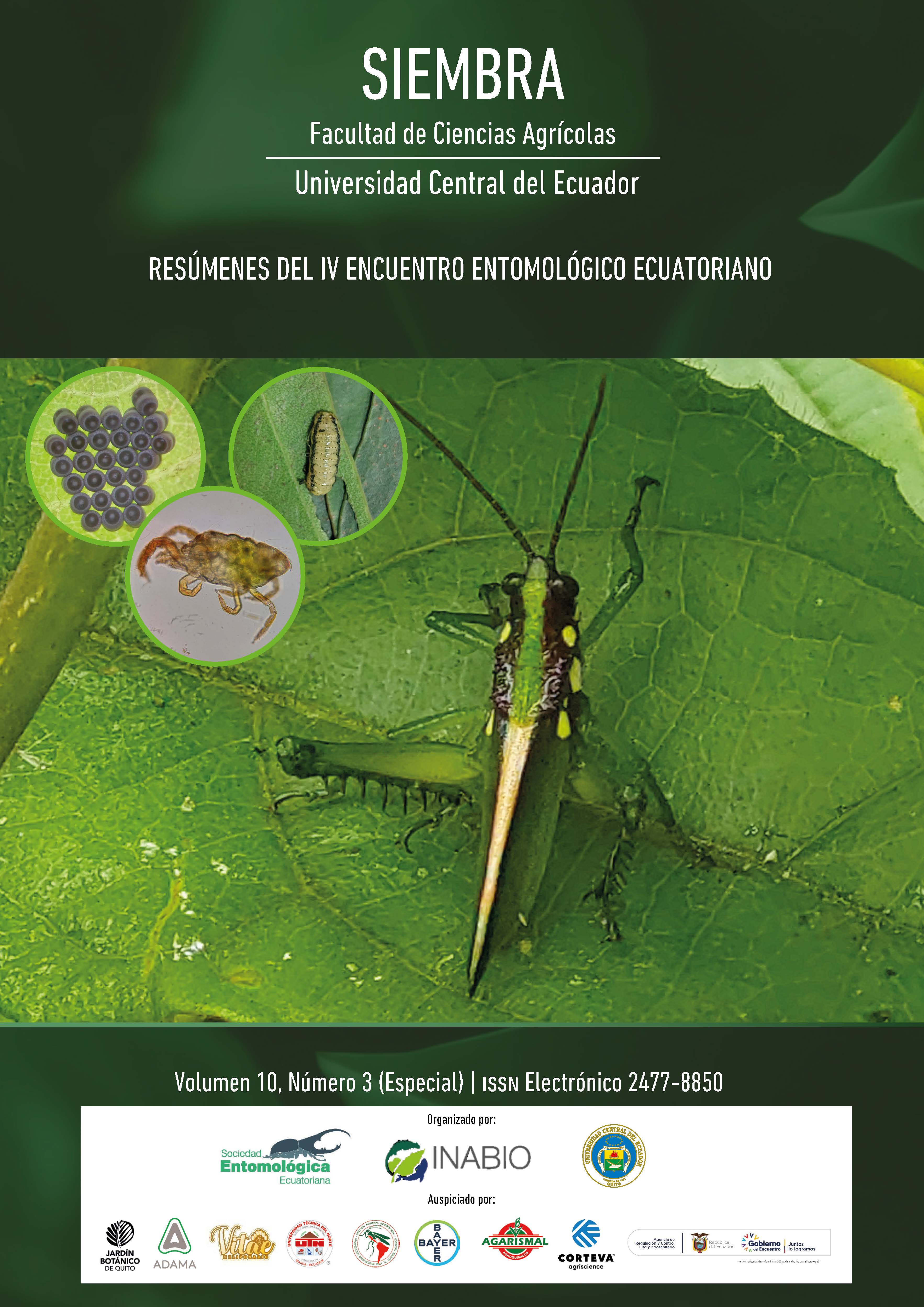ED006. Diversity of the araneofauna of the mangroves of Ecuador. Project "Mangroves of Ecuador: An integrated study between academia and ancestral knowledge"
Main Article Content
Abstract
In Ecuador, around 56,000 hectares of mangroves have been lost, 27 % of its surface, mainly due to shrimp farms and human settlements. The deterioration of the mangrove affects the ancestral users who depend on its resources and causes the loss of its biodiversity. This study is the first investigation of spiders in mangroves in Ecuador and is important due to the megadiversity of this group, with more than 50,000 species described to date (World Catalog of Spiders) and in Ecuador its knowledge is still insufficient. Spiders are bioindicator organisms of the health of ecosystems and fulfill important functions such as controlling pest insect populations. Due to this, knowing the araneofauna of the mangroves is a useful tool to evaluate the health and efficiency of mangrove restoration strategies. In this study, he conducted an exploration to determine the diversity of the spider fauna associated with the mangrove forest. Nine sampling sites along the Ecuadorian coast (5 continental and 4 islands) were selected. The methodology of beating branches was used in transects of 1 000 meters from a boat, for one hour duration and manual catch in quadrants of 250 m2. Preserved in 70 % alcohol for identification. 1,898 individuals were collected, distributed in 12 families, 30 confirmed genera, eight confirmed species and 82 morphospecies. A greater diversity of morphospecies was found on the islands than in continental mangrove sites. There are certain limitations in terms of identification due to the lack of Taxonomists in the different families of spiders, knowing the structure and composition of the spider community is essential for their use as bioindicator organisms of mangrove health.
Downloads
Metrics
Article Details

This work is licensed under a Creative Commons Attribution-NonCommercial 4.0 International License.
The authors who publish in Siembra know and accept the following conditions:
- Authors retain the copyright and grant Siembra the right of first publication of the work, under the Creative Commons Attribution License. Third parties are allowed to use what has been published as long as they refer to the author or authors of the work and its publication in this journal.
![]() This content is licensed under a Creative Commons Attribution-Noncommercial 4.0 International (CC BY-NC 4.0).
This content is licensed under a Creative Commons Attribution-Noncommercial 4.0 International (CC BY-NC 4.0).
- Authors maintain the copyright and guarantee Siembra the right to publish the manuscript through the channels it considers appropriate.
- Authors may establish on their own additional agreements for the non-exclusive distribution of the version of the work published in Siembra, acknowledging their initial publication in the same, such as in institutional repositories.
- Authors are authorized to disseminate their work electronically once the manuscript is accepted for publication.

